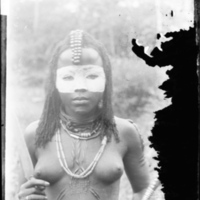
African Woman Described as a Witch
African woman described as a 'Witch at Euli, Ikelemba'. This image formed part of the Harris Lantern Slide Collection. Under King Leopold II the Congo Free State used mass forced labour to extract rubber from the jungle for the European market. As consumer demand grew King Leopold II's private army - the Force Publique - used violent means to coerce the population into meeting quotas, including murder, mutilation, rape, village burning, starvation and hostage taking. Alice Seeley Harris and her husband Reverend John H. Harris were missionaries in the Congo Free State from the late 1890s. Alice produced a collection of images documenting the horrific abuses of the African rubber labourers. Her photographs are considered to be an important development in the history of humanitarian campaigning. The images were used in a number of publications. The Harrises also used the photographs to develop the Congo Atrocity Lantern Lecture which toured Britain and the the USA raising awareness of the issue of colonial abuses under King Leopold II's regime. Source: Antislavery International.
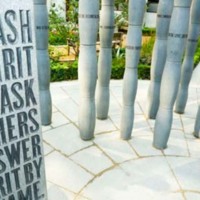
Gilt of Cain
Gilt of Cain was unveiled by the Archbishop Emeritus Desmond Tutu in Fen Court, City of London, in September 2008. The artwork, a collaboration by sculptor Michael Visocchi and poet Lemn Sissay, commemorates the abolition of the transatlantic slave trade. The granite sculpture is composed of a group of columns surrounding a podium – suggesting an ecclesiastical pulpit or slave auctioneer’s block. Extracts from Lemn Sissay’s poem, ‘Gilt of Cain’, are engraved into the granite.
Fen Court is the site of a churchyard formerly of St Gabriel’s Fenchurch St and now in the Parish of St Edmund the King and St Mary Woolnoth, Lombard St. The latter has a strong historical connection with the British abolitionist movement of the 18th and 19th centuries: Reverend John Newton, a slave-trader turned preacher and abolitionist, was rector of St Mary Woolnoth between 1780 – 1807. This project was initiated by Black British Heritage and the Parish of St Mary Woolnoth and was commissioned by the City of London Corporation in partnership with the British Land Company.
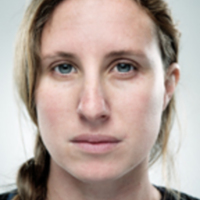
Esther
There are an estimated 403,000 people living in conditions of modern slavery in the United States (GSI 2018). Among this number, are children subjected to forced marriage. A study published on child marriage in 2011 determined that the prevalence of child marriage among women in the US was 8.9 percent, meaning that over 9.4 million US women were married at age 16 or younger. Forced marriage and child marriage are understudies problems within the United States and more research is needed to determine what drives its occurrence. Esther was 17 years old when she was forced to marry a boy against her will. She was subjected to emotional, physical and sexual abuse daily by her husband. After 9 years, Esther was finally able divorce her abusive husband, however was coerced into having her divorce arbitrated by a religious court that deemed she must raise her children in the same insular religion in which she was raised and married. Unchained provided Esther with an attorney who was able to win Esther full custody of her children and the rise to raise them as she chooses.
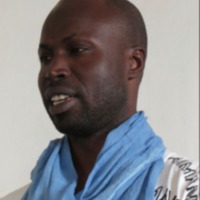
Moutarou
Across Senegal, an estimated 50,000 boys living in traditional Quranic boarding schools, or daaras, are forced to beg for daily quotas of money, rice or sugar by their Quranic teachers, known as marabouts. Known as talibés, these children are sent by their parents to daaras to learn the holy Coran. Children in these daaras are often beaten, chained, bound, and subjected to other forms of physical or psychological abuse amounting to inhuman and degrading treatment. While in 2016 the government introduced a new programme to 'remove children from the streets', it has done little to reduce the alarming numbers of children subjected to exploitation, abuse and daily neglect. Moutarou was sent to be a talibé in Dakar by his father during his school summer vacations. Moutarou was forced to beg for food and money daily and provide the marabout with cash under the threat of violence.
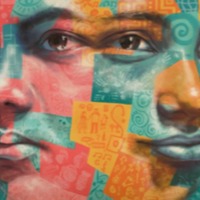
Tim
Despite having the lowest regional prevalence of modern slavery in the world, Europe remains a destination, and to a lesser extent, a source region for the exploitation of men, women and children in forced labour and commercial sexual exploitation. According to the most recent Eurostat findings, European Union (EU) citizens account for 65 percent of identified trafficked victims within Europe. These individuals mostly originate from Eastern Europe, including Romania, Bulgaria, Lithuania and Slovakia. In Albania and Bosnia and Herzegovina, the European Parliament has identified corruption and the judicial system as reform challenges towards accession talks within the EU. In Greece, the turbulent economic situation has increased vulnerability for populations seeking employment and livelihood opportunities. In Greece, unemployment reached 24.4 percent in January 2016 with a youth unemployment rate of 51.9 percent. Tim thought he had escaped an exploitative situation when he fled the house of his employer. While wandering the streets he was approached by a woman who offered to help him. However, upon arrival at her house, he was forced to undertake all the housework and childcare responsibilities and was prevented from leaving the house except to pick the children up from school.
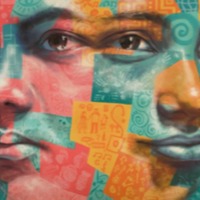
Crystal B
The UK National Crime Agency estimates 3,309 potential victims of human trafficking came into contact with the State or an NGO in 2014. The latest government statistics derived from the UK National Referral Mechanism in 2014 reveal 2,340 potential victims of trafficking from 96 countries of origin, of whom 61 percent were female and 29 percent were children. Of those identified through the NRM, the majority were adults classified as victims of sexual exploitation followed by adults exploited in the domestic service sector and other types of labour exploitation. The largest proportion of victims was from Albania, followed by Nigeria, Vietnam, Romania and Slovakia. Crystal was trafficked to the UK from Trinidad into a situation of domestic servitude leaving four children in the West Indies. She endured an abusive marriage and was vulnerable to coercion and grooming. Crystal was trafficked for four years, sold to three families and worked at least 18 hours-a-day.
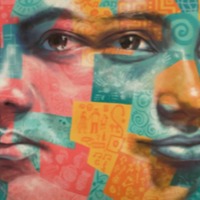
Sophie Hayes
Despite having the lowest regional prevalence of modern slavery in the world, Europe remains a destination, and to a lesser extent, a source region for the exploitation of men, women and children in forced labour and commercial sexual exploitation. Trafficking for sexual exploitation is the most widespread for of modern slavery with an 84% of victims trafficked for this purpose. The majority of those trafficked for this purpose are women and young girls who often originate from Eastern Europe within the EU as well as Sub-Saharan Africa, with the majority of people being trafficked from Nigeria to various parts of Europe including Italy, France, Spain and the UK through an array of complex trafficking networks. Sophie Hayes was deceived by a man who said he loved her. She was forced to work on the streets of Italy, was beaten up, force-fed and turned into a ‘product’. Sophie is a survivor determined to turn her horrendous experiences into positive ones and doing everything in her power to make a difference and empower survivors of trafficking to build hope-filled futures.
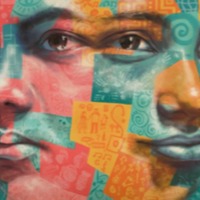
Sameena
The Netherlands is a source, transit and destination country for men, women and children trafficked for the purposes of commercial sexual exploitation and forced labour. It is estimated that around 175, 000 people are living in conditions of modern slavery in the country. It is reported that many women are trafficked within the country in to forced prostitution. Victims are often trafficked by so called ‘pimp boys’ or ‘lover boys’ – men who seduce young women and girls, gaining their trust and then forcing them in to commercial sexual exploitation. Sameena was 18 years old when she left home and became homeless. Sameena got a job in the catering agency where she met her boyfriend, Jim. One evening Jim invited Sameena to his apartment, where she arrived to a number of his male friends. That night was the first time she was raped. After that, for two years Sameena was forced to work as a prostitute. Even after physically escaping, Sameena still struggled to mentally free herself from her past exploitation. In this narrative Sameena tells of how running helped her overcome her past trauma
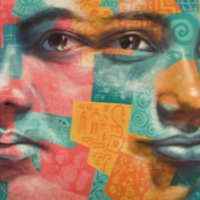
Remy
In the Philippines, women and children are subjected to sexual exploitation in brothels, bars, and massage parlours, online, as well as in the production of pornography. The Philippines is an international hub for prostitution and commercial sex tourism – a highly profitable business for organised criminal syndicates. The demand for sex with children among both local and foreign men has continued to fuel child sex tourism. Rising internet usage rates, the availability of mobile phones and poverty has fostered online child sexual exploitation. Remy was 12 years old when she ran away from a verbally and sexually abusive family. During a night out with friends she was introduced to a man who offered her a job in a club in Cotabato City. Upon arrival Remy was sold to the manager of a sex club where she was forced to provide sexual services for men under the threat of violence. Feeling hopeless, Remy was finally rescued by police when trouble at the club led the manager to move her and others to Cebu City.
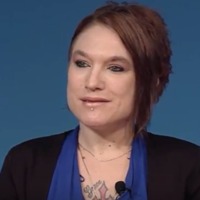
Jennifer A
Sex trafficking is a form of modern slavery that exists throughout the United States. Traffickers use violence, threats, lies, debt bondage and other forms of coercion to compel adults and children to engage in commercial sex acts against their will. The situations that sex trafficking victims face vary, many victims become romantically involved with someone who then forces them into prostitution. Others are lured with false promises of a job, and some are forced to sell sex by members of their own families. Victims of sex trafficking include both foreign nationals and US citizens, with women making up the majority of those trafficked for the purposes of commercial sexual exploitation. In 2015, the most reported venues/industries for sex trafficking included commercial-front brothels, hotel/motel-based trafficking, online advertisements with unknown locations, residential brothels, and street-based sex trafficking. Jenifer Kempton was sexually assaulted at a young age. Searching for a love she had never received in childhood when, at the age of 25, she thought she had met the man that would break the cycle of abusive relationships. However, instead he got her addicted to drugs and sold her to a gang where she was, branded with a tattoo and forced in to prostitution on the streets of Columbus, Ohio. Jennifer was eventually able to escape and devoted her time to promote awareness and advocate for social change. Jennifer founded Suvivor's Ink to connect survivors to resources and to cover the marks of ownership and violence given to them by their traffickers.
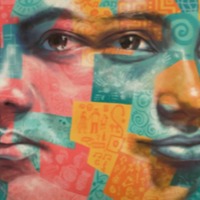
Ada B
The UK National Crime Agency estimates 3,309 potential victims of human trafficking came into contact with the State or an NGO in 2014. The latest government statistics derived from the UK National Referral Mechanism in 2014 reveal 2,340 potential victims of trafficking from 96 countries of origin, of whom 61 percent were female and 29 percent were children. Of those identified through the NRM, the majority were adults classified as victims of sexual exploitation followed by adults exploited in the domestic service sector and other types of labour exploitation. The largest proportion of victims was from Albania, followed by Nigeria, Vietnam, Romania and Slovakia. Ada moved to the London with her boyfriend 'Paul' hoping to start a new life and go back to school. Paul's uncle picked them up from the airport, and they were to stay at his for a while. However, upon arrival Paul left. His uncle raped Ada and told her Paul had gone back to Sierra Leone and she had to work as a prostitute. Locked up at all times and subjected to physical abuse daily, Ada was finally able to escape on New Year when she ran out the back door.
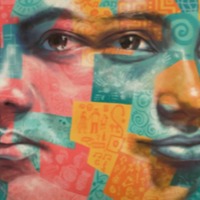
Elanie
The Global Slavery Index estimates that approximately 248,700 people live in conditions of modern slavery in South Africa. 43% of victims in forced labour were identified by the Walk Free survey to be subjected to commercial sexual exploitation. Though the purchasing of sex is criminalised, the sex industry thrives on the street, in brothers and in private residences. South African women, women from neighbouring states and Thai, Chinese, Russian and Brazilian women have been identified as victims of commercial sexual exploitation in South Africa. South African women have also been trafficked abroad, predominantly to Europe. Elanie was abused and neglected from a very young age. She was sexually molested until the age of 14 years old by both her mother’s boyfriends, teachers and her brother. Alcohol featured at an early age during her life, being given it to keep her quiet from the age of 6. After she left school Elanie was looking for work when she was sold to an escort agency and subjected to sexual abuse by numerous men for 8 months.
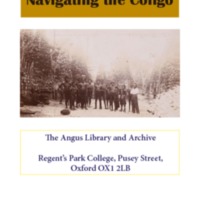
Navigating the Congo
Featuring artefacts, navigational equipment, maps, photographs, personal letters and diaries, Navigating the Congo is an exhibition which explored the history of non-conformist involvement in the Congo River regions during the 19th and 20th century.
By looking at the collections held in The Angus Library and Archive, the exhibition sought to bring to light some of the challenges faced in navigating this history and the relationships that developed between Baptist missionaries and the Kongo people during the period of European colonialism.
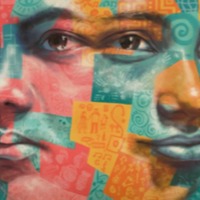
Skyra
Mauritania is one of the last countries in the world where people are still born into hereditary slavery, which means they are literally owned by other people, and forced to work for masters their entire lives. People in slavery come from the Haratine ethnic group, historically enslaved by White Moors. They can be bought and sold, or given as gifts, and face a lifetime of exploitation and abuse. Rape of female slaves is common and their children also become slaves. They are Muslims, and many believe that it is Allah’s wish for them to be enslaved because they are told that their paradise is bound to their Master. In reality, Islam dictates that a Muslim cannot enslave a fellow Muslim. Since 2007 slavery has been criminalised in Mauritania but the law is not enforced and the government is reluctant to acknowledge the existence of the problem.
Skyra describes the sexual abuse she and others endured from the family that had kept her as a slave since birth.
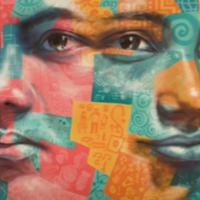
Saleck
Mauritania is one of the last countries in the world where people are still born into hereditary slavery, which means they are literally owned by other people, and forced to work for masters their entire lives. People in slavery come from the Haratine ethnic group, historically enslaved by White Moors. They can be bought and sold, or given as gifts, and face a lifetime of exploitation and abuse. Rape of female slaves is common and their children also become slaves. They are Muslims, and many believe that it is Allah’s wish for them to be enslaved because they are told that their paradise is bound to their Master. In reality, Islam dictates that a Muslim cannot enslave a fellow Muslim. Since 2007 slavery has been criminalised in Mauritania but the law is not enforced and the government is reluctant to acknowledge the existence of the problem. Saleck was born a slave but has worked to not only free himself and his family from their “masters,” but also to help pursue the prosecution of those they formerly served. There are narratives from Saleck’s family members to be found in the archive.
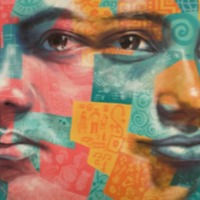
Randa
ISIS has singled out the Yezidi minority, notably its women and children, for particularly brutal treatment. In August 2014, ISIS fighters abducted hundreds, possibly thousands, of Yezidi men, women and children who were fleeing the IS takeover from the Sinjar region, in the north-west of the country. Hundreds of the men were killed and others were forced to convert to Islam under threat of death. Younger women and girls, some as young as 12, were separated from their parents and older relatives and sold, given as gifts or forced to marry ISIS fighters and supporters. Randa was abducted in August 2014 from her village south of Mount Sinjar with her parents and siblings and scores of other relatives. She was sold or given as a “gift” to a man twice her age who then raped her. Her father was killed along with other male relatives. Her mother, who was heavily pregnant when she was abducted, gave birth in ISIS captivity and was still being held with scores of other women and children from the family when Randa told her story. Some were being held in Syria, others in Iraq. Randa and two of her aunts and two uncles managed to escape at different times. She was 16 years old during her enslavement and when she told her story in late 2014.
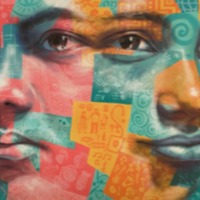
Olabisi
The UK National Crime Agency estimates 3,309 potential victims of human trafficking came into contact with the State or an NGO in 2014. The latest government statistics derived from the UK National Referral Mechanism in 2014 reveal 2,340 potential victims of trafficking from 96 countries of origin, of whom 61 percent were female and 29 percent were children. Of those identified through the NRM, the majority were adults classified as victims of sexual exploitation followed by adults exploited in the domestic service sector and other types of labour exploitation. The largest proportion of victims was from Albania, followed by Nigeria, Vietnam, Romania and Slovakia. Olabisi’s initial claim to asylum was refused and, although she accessed legal representation to appeal this decision, she chose to leave Unseen’s project and her whereabouts are currently unknown.
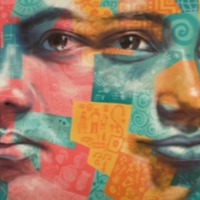
Fawziya
ISIS has singled out the Yazidi minority, notably its women and children, for particularly brutal treatment. In August 2014, ISIS fighters abducted hundreds, possibly thousands, of Yezidi men, women and children who were fleeing the IS takeover from the Sinjar region, in the north-west of the country. Hundreds of the men were killed and others were forced to convert to Islam under threat of death. Younger women and girls, some as young as 12, were separated from their parents and older relatives and sold, given as gifts or forced to marry ISIS fighters and supporters. Fawziya was abducted in August 2014 and was held in her captor's home with his family. She was 18 years old during her enslavement and when she told her story in late 2014.
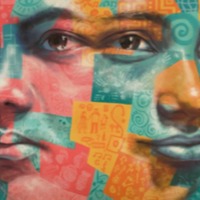
Bella C
Cambodia was renowned as a sex tourism destination in the 1990s and this legacy is still prevalent today with women and girls trafficked within the thriving sex industry in Cambodia's major cities. Despite significant attempts to curb CSE, NGOs report the industry has been pushed underground and sex offenders are still able to purchase sex with children through an intermediary rather than more overt selling of sex in brothels. Boys and young men are also vulnerable to sexual exploitation, with many entering the massage industry due to a lack of training and skills. Bella was sold into sex slavery by a woman she met who recruited her for domestic work. Her story demonstrates the ways in which survivors can be supported by organisations to gain self-confidence and education, in order to avoid returning to situations of slavery.
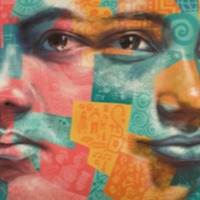
Yei
Thousands of women and children were taken into slavery during the decades of Sudan’s civil war, mainly from Northern Bahr El Ghazal (where the narrator was liberated) and the Nuba Mountains. Slave-taking was revived in 1985 by the National Islamic government of Sudan primarily as a weapon against counterinsurgents in the South, and secondarily a way to reimburse its surrogate soldiers for neutralizing this threat. In 1989 the government created the Popular Defense Forces (PDF), militia trained to raid villages and take people as slaves. PDF recruits were allowed to keep whoever they captured, along with booty of grain and cattle. One study documents 12,000 abductions by name, while NGOs offer estimates ranging from 15,000 to 200,000. The slaves were often moved to large towns in the north on week-long journeys during which the women were repeatedly raped, and then sold to new masters who used them without pay for farming and sexual services. The peace process brought these PDF abductions to an end, but inter-tribal abductions continue in Southern Sudan. In addition, Sudanese children are used by rebel groups in the ongoing conflict in Darfur; Sudanese boys from the country’s eastern Rashaida tribe continue to be trafficked to the Middle East for use as camel jockeys; the rebel organization “Lord’s Resistance Army” has forcibly conscripted children in Southern Sudan for use as combatants in its war against Uganda; and the institution of chattel slavery continues in southern Darfur and southern Kordofan.Yei was captured and sold as a slave to Abdullah who tried to force him to convert to Islam. When he refused, Yei was sent to a cattle camp.